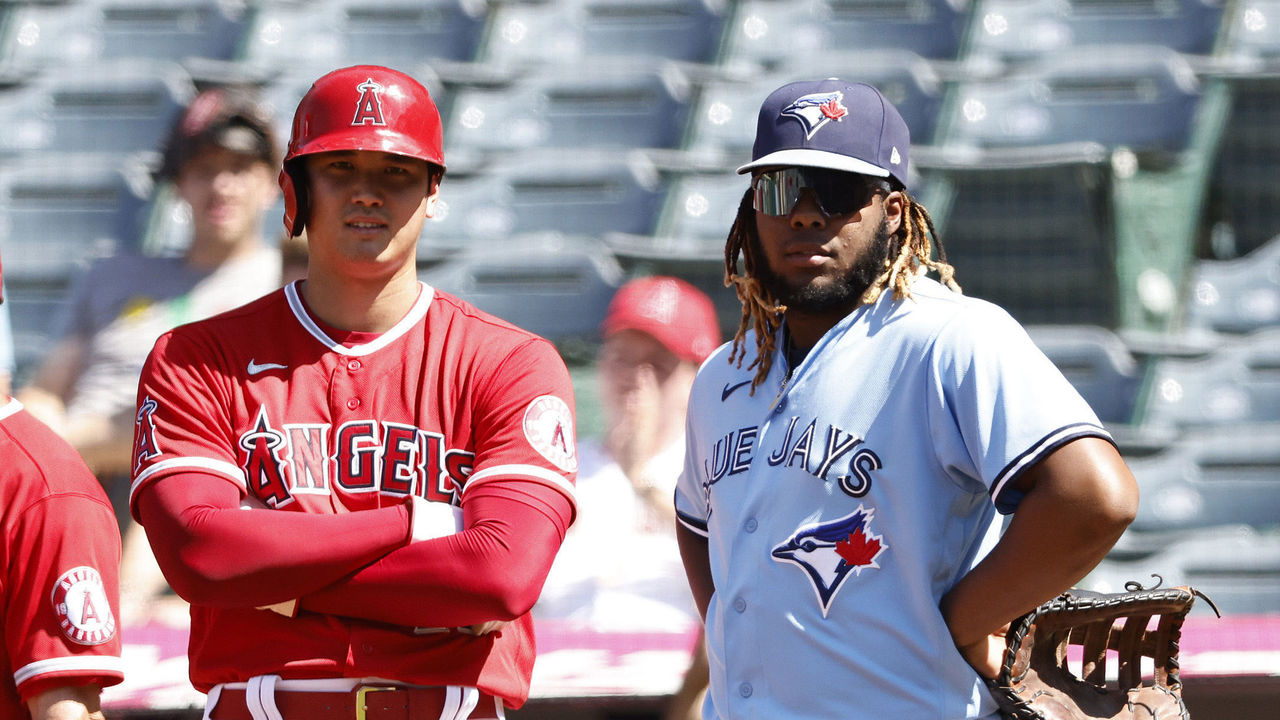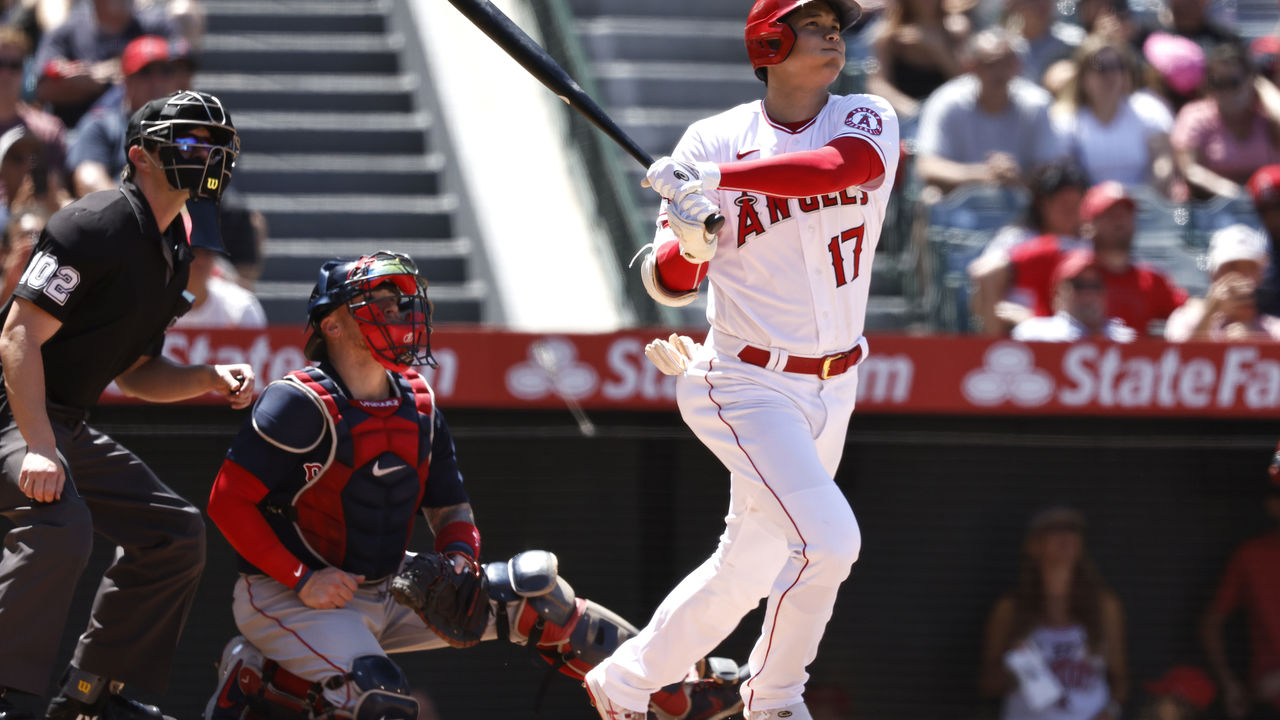No debate: Why Ohtani is the AL MVP
In many other seasons, Vladimir Guerrero Jr. would be a no-doubt MVP choice in the American League. After all, he was within striking distance of a Triple Crown for much of September. He became one of the youngest major leaguers to hit 40 home runs in a season. He was the most feared and productive hitter on the planet.
But this isn't like most other seasons - or any other season, for that matter. This was a campaign in which Shohei Ohtani did things on a baseball field that hadn't been done since Babe Ruth was with the Boston Red Sox over 100 years ago. Even more: Ohtani's arguably a better two-way player than Ruth.
Even as Guerrero closed the gap in recent weeks in terms of WAR value, even as his surge coincided with the Blue Jays' push in the wild-card race, this author believes Ohtani's made an overwhelming case to be AL MVP.

Ohtani's been so good, he's made us rethink what's possible on a baseball field. In combining pitching and batting WAR, he was the best player in the majors this season.
Ohtani's totals include 5.1 FanGraphs WAR as a position player and 2.9 WAR as a pitcher - an 8 WAR total - through play Thursday. Guerrero's at 6.6 WAR.
In fact, Guerrero's teammate, Marcus Semien, moved into a tie with him in FanGraphs WAR (6.6) on Friday. Semien holds the WAR edge at Baseball-Reference. Guerrero still ranks above him in average, home runs, and RBIs - and is thought by oddsmakers to be the only viable alternative to Ohtani.
At Baseball-Reference, Ohtani's edge is greater. He's produced 9 combined WAR compared to Guerrero's 6.7 mark.
Guerrero's the better pure hitter: his wRC+ mark, which adjusts for ballpark and league effects, is first in the AL and second in the majors (165) to Bryce Harper (167). Ohtani isn't too shabby: he's second in the AL and fifth in the league (153).
Entering Friday, Ohtani had slugged 45 home runs, stole 26 bases, and posted a .371 on-base mark - in addition to being the Los Angeles Angels' ace on the mound.

Per inning, Ohtani (73 ERA-) was better than Gerrit Cole (75) this season, according to the ERA metric that also adjusts for ballpark and league.
That's all a fancy way of saying: Ohtani was 27% better than the average MLB pitcher and 53% better than the average MLB hitter.
Here's another way of putting it: Ohtani was Cole on the mound and Fernando Tatis Jr. at the plate.
Only Guerrero out-slugged Ohtani in the AL (.596 to .594). Only four other starting pitchers to throw at least 100 innings in the AL struck out more batters per nine innings than Ohtani. That's a power-hitting and power-pitching combo we've never seen before.
Another measure to consider is win probability added (WPA), which - and we're truly getting down and nerdy here - is the accumulation of the changes in win expectancy before and after every plate appearance or batter faced. It attempts to quantify which players had a greater effect on game outcomes, which is different from a stat like WAR, which is concerned with total production without game context. For instance: a home run in a close game late produces a greater WPA number than a home run early in a game.
By WPA, Ohtani comes out even further in front, as he's produced 5.1 wins in WPA as a hitter, ranking first in the majors. He also owns 2.3 WPA as a pitcher. Guerrero's at 3.3 WPA, 12th among big-league hitters. While teammates influence that number, Ohtani was impacting games and clearly lifting his team.

In some ways, we just watched the best two-way season ever.
Ohtani already surpassed the number of plate appearances Ruth had in 1919, and needs four more innings to surpass Ruth's 1919 output (133 1/3 innings) in Ruth's top volume season of two-way playing. And Ohtani's doing this in an integrated era of baseball against the best caliber of opponents to ever play in the majors. In 1919, Ruth was about league average on the mound (96 ERA-) while being an outlier hitter (203 wRC+).
In examining the underlying skills, there's little doubt Ohtani's the most talented player in the majors. Consider that he's thrown a 100-mph pitch this year and hit a ball off his bat at 119 mph, which ranks in the 99th percentile for max exit velocity. He also ranks in the 99th percentile for barrel percentage - how often a hitter makes quality contact with a pitch. We're not quite done. He also ranks in the 90th percentile for sprint speed - he's even adding value on the bases.
Here's a simple way to break down this year's MVP argument: you're drafting a team for 2021 based on this season's performance, and you have the No. 1 pick. Who would you choose? And how could you not pick Ohtani?
The most common argument against Ohtani: Guerrero's efforts have been for a better team, one with a chance to play in the postseason. It goes back to the debate of what "valuable" means in MVP.
Former Blue Jay Josh Donaldson made such an argument recently, saying he'd vote for Guerrero if he had a vote. If your team isn’t winning, Donaldson reasoned, you shouldn't be the league’s most valuable player. Yankees outfielder Aaron Judge joined Donaldson this week in throwing his support behind Guerrero.
But the MVP award is an individual honor, not a team honor, and even the best baseball players have far less impact on their teams than an NBA star or NFL quarterback due to the nature of the sport.

It's also been established that an MVP doesn't have to be tied to a playoff team or even a winning team (seven MVPs have been on losing teams). That precedent is set. Why would this season be an exception?
Moreover, the Blue Jays are no lock for the playoffs, and L.A. was within a few games of Toronto for much of the season, making it difficult to argue that the majority of Guerrero's plate appearances came in much more meaningful games or that he faced more pressure. After all, no player this season was more focused on by the media - both domestic and foreign - than Ohtani.
There's also hidden value not well accounted for: Ohtani absorbed more total work as a 2-in-1 player, allowing the Angels to less often go to a bench or lesser option on their roster. Entering Friday, he's produced a combined 1,159 plate appearances as a hitter and pitcher (batters faced), nearly doubling the volume of Guerrero's work (684 plate appearances). While Guerrero played far more innings in the field, and his defense was touted as much improved, he doesn't rate as an above-average first baseman.
Preferring Ohtani as MVP doesn't take anything away from an amazing campaign from Guerrero, who's probably going to win one or more of these awards. His bat is special. He showed tremendous growth this year. And he's only 22, five years younger than Ohtani, whose bat could be at its peak.
Guerrero closed the gap in September, but Ohtani was the best player in baseball this year. He produced the most value, in terms of wins created, on the field - that's the "V" in MVP. He's deserving of the award after a once-in-a-century campaign.
Travis Sawchik is theScore's senior baseball writer.